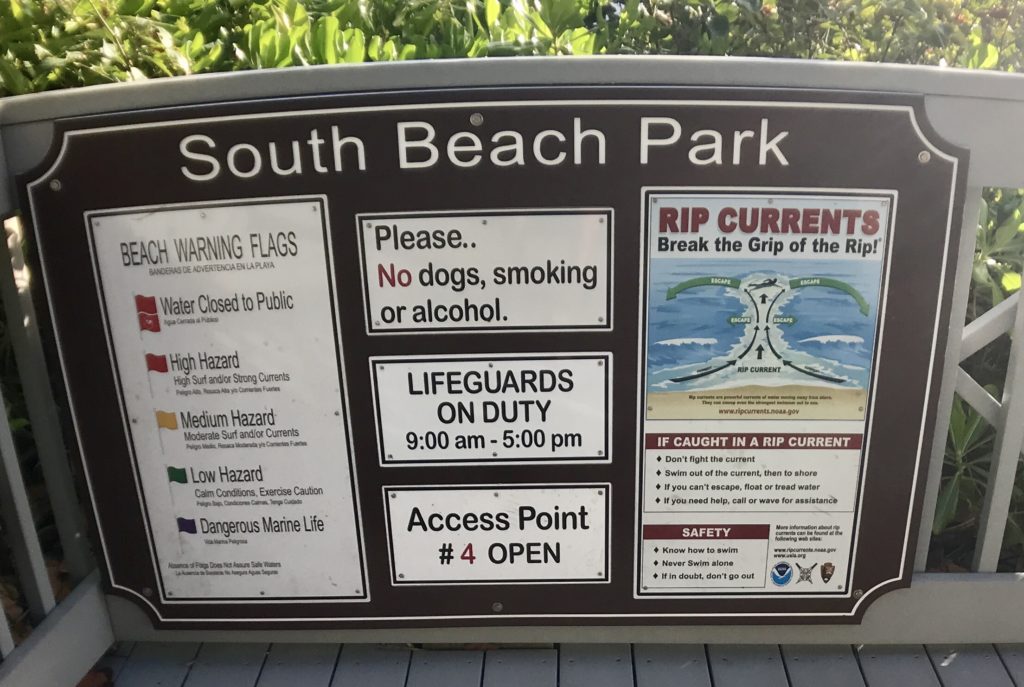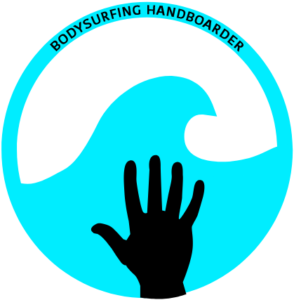It can be a very scary experience facing a roaring avalanche of water toppling toward you while getting ready to drop into the barrel. It does not matter if you are a beginner or expert bodysurfer, you are at the mercy of the wave’s power.
Is bodysurfing with a handboard dangerous? Bodysurfing, in general, can be a very dangerous water sport depending on the size of the waves and your skill level. Wearing a floatation device, like a handboard, can magnify wipeouts if you are not careful.
Bodysurfing is more dangerous than you think, which is why you need to be prepared before jumping into the water. I created this guide to help you become aware of potential dangers, avoid common mistakes, and prevent injury. Lastly, I have provided a safety checklist that could save your life.
Common mistakes you should avoid
As a beginner bodysurfer, there are a few mistakes you should try to avoid in order to prevent injury and ride waves safely.
- Mistiming/misreading waves: This is a mistake almost all new beginners make. They are either take off too early under the lip or too late behind the barrel. You need to find your way into the pocket of the wave in order to bodysurf successfully. Unfortunately, this is very difficult to overcome because it is hard to teach how to time or read waves. It is all about feel, which requires experience. The only way to prevent this mistake is to spend more time in the water and also spend time studying techniques of more advanced bodysurfers.
- Not pushing off the ground hard enough: In order to catch waves in waist-high or chest-high water, it is imperative that you use your legs. You need to really power through the water by pushing off the ground to drop into the barrel. I see many beginners not using enough leg strength simply hoping the wave “picks them up” without any extra effort.
- Paddling incorrectly: You simply just can’t stick your hand in the water and flick your wrist. This will result in many missed waves. You need to stick your arms elbow-deep into the water to propel yourself forward.
- Not paddling enough: Many beginners stop paddling too soon because they are either excited or nervous. You want to make a few extra strokes as the wave picks you up before you enter into a planing position. This can help you drop into the barrel much easier.
- Forgetting to push up on the handboard: It is important once you catch the wave to push up on your handboard. Many beginner bodysurfers forget this action because they are too caught up in the moment. Pushing up on your handboard will help you plane easier across the water and reduce drag. You will notice increased buoyancy so you can ride faster and farther.
- Walking head on into the waves: You can always tell it is someone’s first time walking out past the break when you see them trying to take the waves straight on with their
handboards in front of them. This will only knock your board back into your face possibly causing injury. It will also make your journey very time-consuming and waste energy. When you walk out past the surf you want to remember to turn your shoulder into the wave to cut through it while keeping your bodysurfinghandplane behind you so it does not accidentally hit your head.
Most common bodysurfing injuries
Bodysurfing injuries are actually fairly common, especially if you are new to the sport. Here is a list of common injuries that you should be aware of:
- Face & Head Lacerations
- Elbow & Knee Scrapes
- Shoulder Dislocation
- Knee/Ankle Sprain
- Back/Lumbar Sprain or Tightness
- Pulled Muscle
- Cramping
- Neck Trauma
- Jellyfish Stings
It is completely normal to get scrapes or cuts when bodysurfing. I have received a few rashes from wiping out in the sandy shoreline. It only hurts for a little while and sometimes you don’t even notice it until you get home!
In larger surf near rocks and coral, you
Shoulder dislocation is a more serious common injury among bodysurfers, especially if you use a hand plane. This can happen while wearing a bodysurfing handboard.
How can you get hurt using a bodysurfing handboard? Strapping a
The amount of torque your arm experiences is amplified when you have this type of board stuck to your hand. This is why wearing a handboard while you bodysurf can actually increase the possibility of injuring your shoulder more severely if you are not careful.
Ankle and knee sprains can happen if you lose your footing while walking out past the surf. You can also sprain a lower limb if you slip while pushing off the ocean floor.
Tweaking or spraining your back is possible when bodysurfing. I remember one time I took a nosedive and my feet almost came up over my head like a scorpion as I crashed into the ocean bottom. Fortunately, this injury did not end up being that serious so I was able to recover quickly
Pulled muscles and cramps are the worst in the ocean. Your mobility decreases and it feels like you are trapped in quicksand.
I pulled my hamstring once while bodysurfing. It
Neck injuries are the most
Even though large waves can toss you about, smaller waves can easily break your neck because there is nothing to break your fall as you approach the shoreline. The minimal protection margin of error when you bodysurf makes the sport actually quite dangerous.
Jellyfish stings are another injury you need to be aware of when bodysurfing. I remember feeling tingling across my abdomen and obliques after I came out of the water once. It doesn’t hurt too bad and it won’t kill you but it is still annoying. Jellyfish are very difficult to avoid.
Injury prevention
Sometimes injuring yourself is inevitable but there are a few actions you can take to help prevent them. To best prepare your body for the physically demanding sport of bodysurfing you can perform a warmup routine. This is a way of getting your body ready for the ocean. Warming up consists of a combination of stretching and dynamic exercises.
You can also implement a bodysurfing workout routine in your daily schedule. Working out regularly will increase your strength and stamina to enhance your bodysurfing performance.
Bodysurfing safety checklist

Safety is absolutely paramount to your health when it comes to bodysurfing with a handboard. You want to enjoy this traditional water sport but also reduce the risk of jeopardizing your well-being. Here are some tips to help to keep yourself and others safe during your next bodysurfing session:
- Bodysurf in the designated areas. You will see flags like the one in the featured image of this post that will tell you where and where not to be in the water.
- Pay attention to the beach rules and signs. Typically most beaches have rules posted near the entry.
- Bodysurf where there
are lifeguards present. Most beaches have a lifeguard stand located every 25 meters along the shoreline. Make sure to bodysurf where they can see you in case of an emergency. - Wait at least 45 minutes to 1 hour after eating a meal before bodysurfing. Your body needs time to digest the food you consumed.
- Refrain from consuming drugs or alcohol when bodysurfing as it can alter your judgment and lead to a potentially life-threatening injury.
- Identify rip currents before entering the water. Typically, lifeguards will mark sections of the beach with flags where they think rip currents are present. Feel free to ask them if you are not sure. Make sure to check out my guide on how to survive a rip current.
- Wave your hand if you are having trouble in the water. The lifeguard will be able to spot you easier if you do this.
- Start bodysurfing on long-sloping, soft, sandy beaches if you are a beginner. These are the most friendly to new bodysurfers. You do not want to bodysurf near rocks, coral or piers.
- Bodysurf smaller waves if it is your first time. Large waves can be intimidating and scary if you wipe out. If you do not know what you are doing you can easily get injured. It is best practice to become familiar with the bodysurfing technique by riding small waves first.
- Shuffle or slide your feet on the way out past the surf to prevent getting stung by stingrays. This will warn them of your approach and scare them away.
- Do not catch a wave behind another person. Instead, you want to stagger yourself if the ocean is crowded with other surfers. This will give you clearance so you don’t run into others.
- Wear the appropriate bodysurfing equipment. For all of the best fins, wetsuits,
handboards and more, check out my recommended bodysurfing gear. - Check the weather for any storms. Lightning, storm surge, high wind, fog, and heavy rain can be dangerous conditions for bodysurfing. If you find yourself in these conditions then return to shore immediately and seek shelter.
- Learn how to pull through the back of the wave as it reaches the shore. This will protect you from getting thrashed by the wave. All you have to do is drop down low into the water and turn around.
- Make sure your hands are out in front of you when bodysurfing. Leading with your hands can help protect your head when necessary.
- Listen to your body. If you are fatigued then make sure to come out of the water and rest. Exhaustion is a real threat to your life when you are in the ocean.
- Don’t bodysurf at night time. Bodysurfing in the ocean when there is no light can be very dangerous because you cannot see where you are going.
- Put on suntan lotion to protect yourself from harmful UV rays.
- Drink plenty of water to prevent dehydration.
Is bodysurfing safer than body boarding?
Bodysurfing is actually considered to be more dangerous than bodyboarding because there is no padding to protect you during a wipeout. Bodyboards act like a big, padded cushion as you hit the shore. When you bodysurf, there is no padding.
Is bodysurfing safer than surfing?
Bodysurfing is just as dangerous as surfing, if not more so because you are crashing headfirst into the shore with nothing to break your fall. There is relatively little margin of error when it comes to bodysurfing in larger surf.
The odds of presenting with a neck injury from bodysurfing are 7.9 times more likely than surfboarding
Gold Coast Health – Dr. How
Should you bodysurf alone?
It is always a better option to have a friend or two with you just in case of an emergency. If you go to a beach that is patrolled by lifeguards and there are other beachgoers you should be fine bodysurfing alone. I solo bodysurf with a handboard all the time and feel safe doing so.
